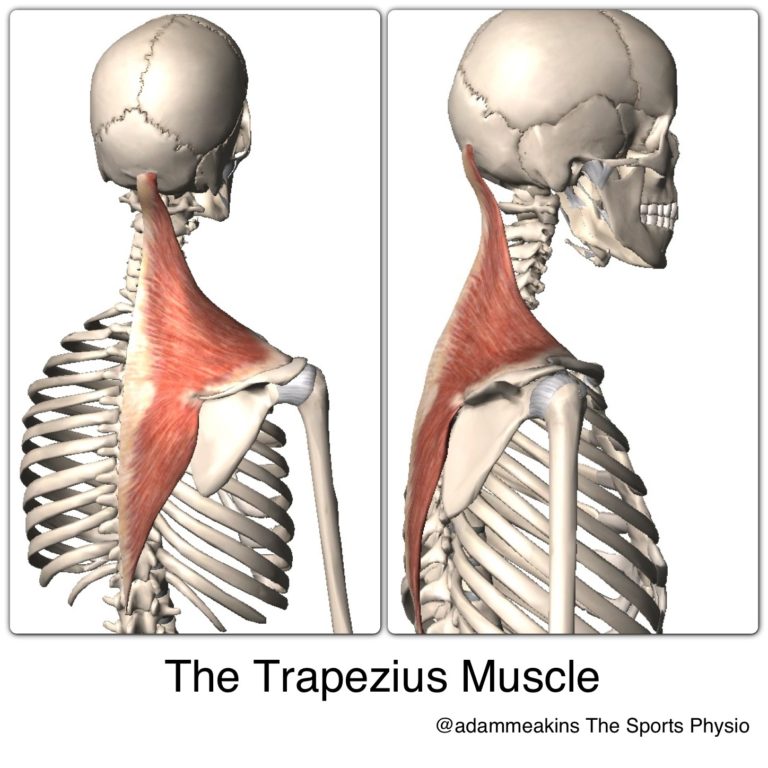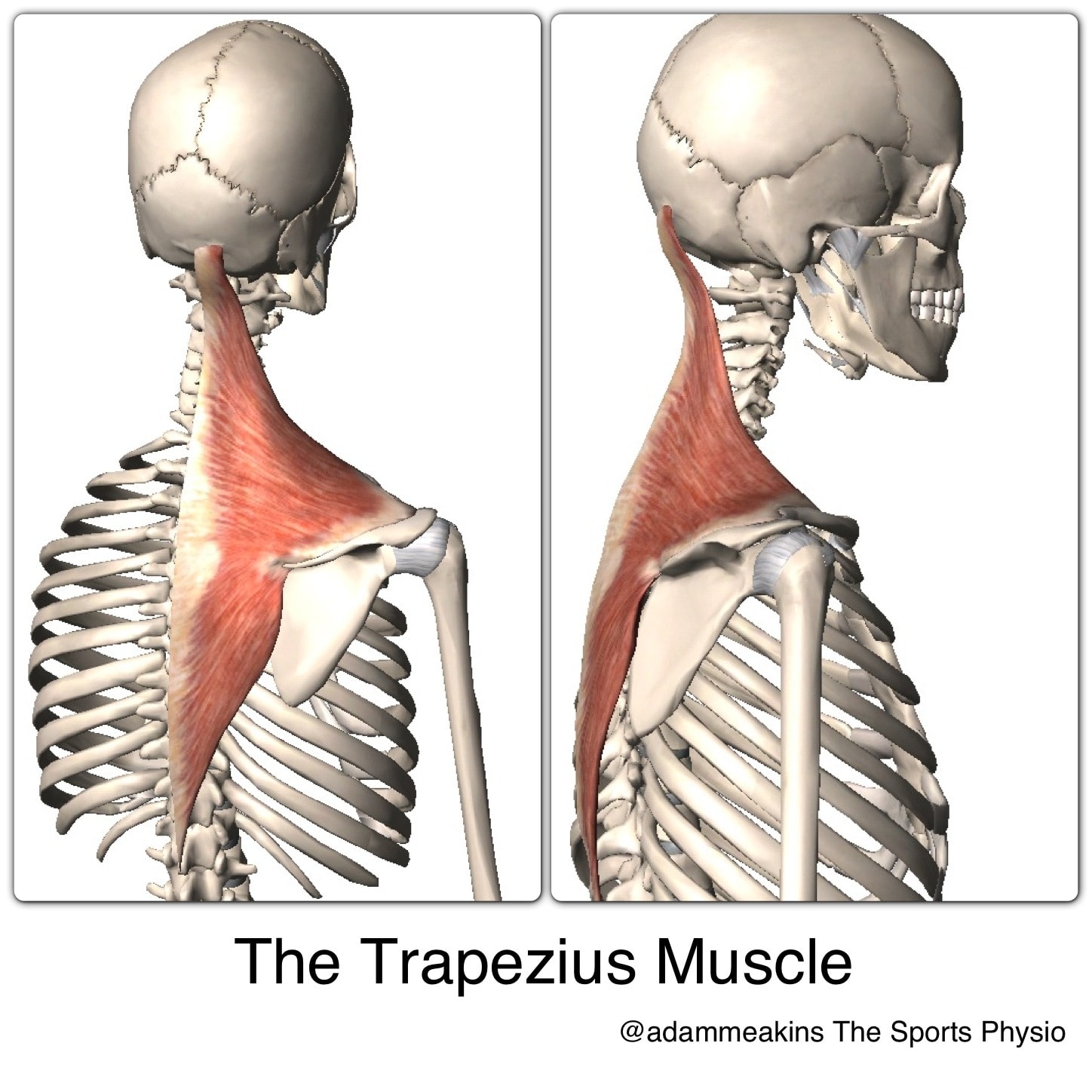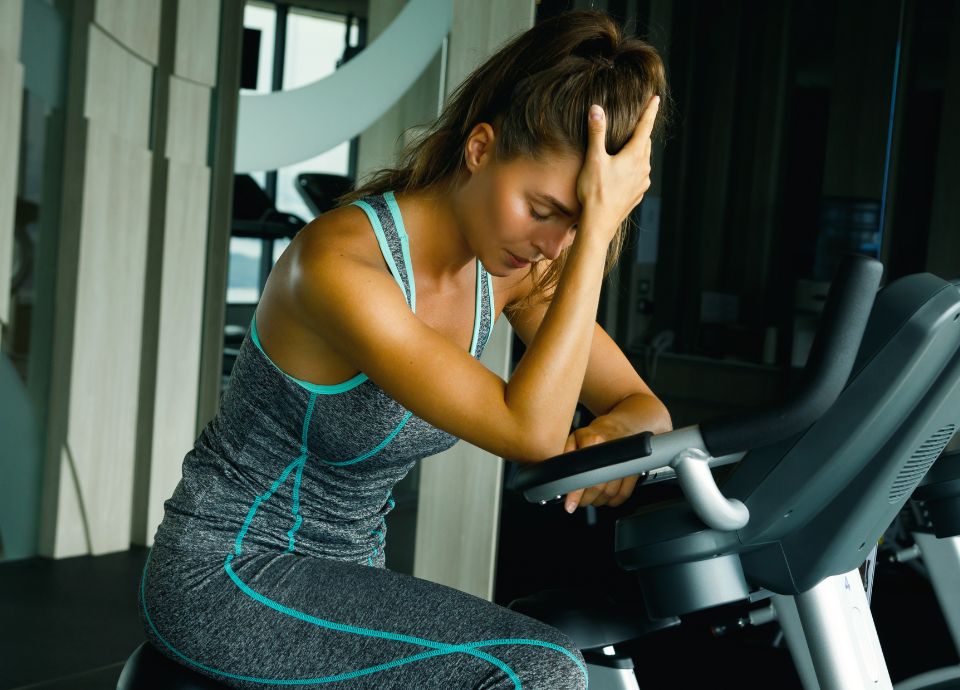The Upper Traps, over-assessed, over blamed, and very misunderstood!
The Upper Traps are often blamed for being too tight leading to pain in the neck and shoulder region. Adam Meakins argues that this is false!

This is a reblog from Adam Meakins Blog: The Sports Physio | Simple, practical honest advice
For readers who prefer a more condensed version in form of a video, please watch our popular YouTube video here:
The upper traps get a lot of blame and are commonly released, massaged, dry needled and what not during physiotherapy treatment, while the middle and lower traps receive a lot of attention during training because they are commonly weak. According to Adam’s view, the reason why the upper traps become tight is because they are weak and thus should be an integral part of the strength training regime instead of just releasing them!
Are you still massaging the upper traps or have you already started training them? Read the article that will give you a different perspective on the role of the upper traps!!!
There is a strong culture within physiotherapy to blame a specific structure, be it a muscle, ligament, nerve, fascia etc when things are sore and painful for our patients. The Upper Trapezius muscle is one such structure that gets an awful lot of blame, but unfairly and incorrectly in my opinion.
I regularly hear physio telling patients that this muscle is too tight or ‘overactive’ and so the cause of their neck or shoulder pain. I hear them explaining how they can feel or see that this muscle is knotted and tense, and explain how it needs to be released, loosened, and stretched. I also see and hear many therapists choosing exercises to help reduce upper traps activity, by focusing on the Lower Traps to restore the balance between them.
Well, I argue the exact opposite approach is needed.
Most, if not all the painful upper traps I see are weak and long, not tight and short, and yes they can ‘feel’ tight and tense, but they ‘feel’ this way because they are overloaded due to being weak. Hence we don’t need to be stretching or massaging these muscles, we need to be giving strengthening exercises, which is completely alien and counterintuitive for some.
Most painful upper traps are weak and long and tight and tense because they are overloaded due to being weak
I argue that weak inefficient Upper Traps are often the culprit for a lot of shoulder and neck pains, and I argue that most Upper Traps need to be strengthened a lot more, a lot, lot more.
However, let’s first look at the anatomy and function of the Upper Traps to help us understand them better. The Trapezius muscle is a large flat muscle that is found down the side of your neck and on top of your shoulders. It’s the most superficial muscle of the upper back and runs from the base of your skull, along to the tip of your shoulder, all the way down to the middle of your back, see the image below.

It is commonly described as having three separate portions, the upper, middle, and lower fibers. These sections are often described in textbooks as having different functions on the action of the shoulder blade (the scapula). The lower fibers are described as depressing it, the middle fibers retract it, and the upper fibers elevate and upwardly rotate it.
However, this is a very simplistic way to look at any muscle function. Firstly, no muscle works in isolation, all muscles work in synergy with others, and one muscle certainly doesn’t work in isolated parts, they tend to work as a whole unit, albeit with some parts working harder than others during different movements.
How a muscle affects movement is also not just due to its insertions and origins, but also the orientation and angle of its muscle fibers. This is what Johnson and Bogduk looked at in the Trapezius muscle in their 1994 paper here.
What they found questioned the commonly held thoughts and explanations of how the Trapezius functions. But despite this paper being over 20 years old, these findings are still not that well known and so many myths about the Traps still exist.
Johnson and Bogduk found that the angle and orientation of the upper fibers of the Trapezius are unable to create ANY significant elevation of the scapula when the arm is in neutral. They also showed that the upper fibers need the coordinated assistance of the lower and middle fibers to upwardly rotate the scapula, highlighting that they do not function in isolation. They also found that the Trapezius muscle is insufficient to rotate or elevate the Scapula alone, instead, it is its coupled action with the Serratus Anterior that does.
The action of the Serratus Anterior pulling the scapula laterally around the chest wall at about 30° of arm elevation is when the lower Trapezius muscles fibers first start to resist the movement, which then starts to cause the scapula to tilt into upward rotation. Once this upward rotation of the scapula has started then the upper Trapezius fibers further assist in its upward rotation and elevation.
The Upper Traps only really contribute to Scapula upward rotation and elevation once the arm is in slight abduction!
The Upper Traps only really contribute to scapula upward rotation and elevation once the arm is in slight abduction
This not well-known fact I think has some big implications on the exercises and movements given by physios and trainers that are thought to influence Trapezius muscle activity. For example, do standard shrugging or hitching actions when the arm is in neutral target the Upper Traps as Scapula upward rotators? Not very much it seems, if at all.
Well they do, anyone who has shrugged will tell you they do. But it’s only really when the arm is in > 30° of abduction and the scapula has already started to rotate do they really kick in!
With the arm in a neutral position, the other thing to consider is another key scapula elevator muscle that is working, the appropriately named Levator Scapulae. However, as the Levator Scapulae attaches to the medial superior pole of the scapula, so it also creates downward scapular rotation, usually the exact opposite movement we are looking to achieve in a lot of shoulder problems.
Now, what about studies showing ‘over activity in the Upper Traps and suggesting that we need to reduce it for shoulder problems such as research done by Ann Cools et al 2007.
Well as much as I really respect and admire the work Ann Cools and her colleagues over in Belgium have done, I think in regards to the Upper Trapezius they could be mistaken, and partly to blame for all this anti-Upper Traps culture in physiotherapy.
Firstly, these studies look at upper Trapezius activity using surface electromyography or EMG, which is a useful tool, and I do like EMG research as it aids my exercise prescription and clinical reasoning by giving me an insight into a muscle’s level of activity. But they do have issues, and they are not infallible to error, and the information taken from such studies has to be used with caution.
For example, despite normalization procedures designed to limit the effect of cross-talk between other muscles when using EMG equipment, there is always some, especially with surface EMG, and I suspect at the point often used for reading upper Trapezius activity it also picks up the Levator Scapulae. I have a suspicion that the Levator Scapulae cross-talk may be producing the so-called high EMG readings from Upper Trapezius.
I also think the EMG readings of the Upper Trapezius can be ‘misinterpreted’ as high or ‘overactive’ in those with shoulder pain and dysfunction due to another forgotten and overlooked action of this muscle!
A primary role of the Upper Trapezius is to distribute loads away from the neck.
The majority of the Upper Trapezius muscle fibers actually attach to the distal third of the clavicle and due to the orientation of these fibers, when they contract they rotate the clavicle medially. This rotation of the clavicle strongly compresses the sternoclavicular joint, and this is a rather useful action.
In fact, it’s a bloody marvelous action and is probably the most beneficial and often overlooked action of the Upper Traps.
The compression of the sternoclavicular joint by the upper Trapezius allows forces and loads from the arm and shoulder to be transferred away from the neck, passing them down through the collarbone, into the sternum, rib cage, and axial skeleton. Pretty damn useful, and maybe good to know for those with neck issues?
How many physios give Upper Traps strengthening exercises for those with neck pains or problems?
As I said, nearly all the upper Trapezius I see clinically are long and weak, struggling to upwardly rotate the Scapula efficiently. It is this struggle of a weak and fatigued muscle that I also think causes the ‘overactive’ readings on EMG studies.
So instead of stretching, rubbing, and poking sore and painful Upper Traps, let’s get them stronger, more resilient, and more robust.
Instead of stretching, rubbing and poking sore and painful Upper Traps, let’s get them stronger and more robust!
It just seems daft to me to ask a muscle that wants to lift and elevate the scapula AND offloads the neck to work less! Of course, get the Lower Traps and Serratus Anterior working, but why not ALSO get the Upper Traps to be stronger as well? In my opinion and clinical experience when the Upper Traps become more resilient, more robust, more strong with exercise it only seems to help those I see with shoulder and neck pains, not hinder them.
I regularly give out exercises and movements with an ’emphasis’ on strengthening the Upper Traps to patients with long-standing neck and shoulder problems who have tried everything else, such as manual therapy, postural correction, rotator cuff work, scapula setting, etc… With some really good results.
Some examples of the exercises I use are overhead shrugs see video below (I sometimes prefer the elbow a little more flexed so the arm isn’t too high in elevation as this can be a bit uncomfortable or unachievable in those with subacromial pain or stiffness).

Another exercise that I often give is one I’ve lovingly called ‘Monkey Shrugs’ these are done by holding your arms down by your sides and then sliding them up the side of your body, up to about waist height so your elbows are bent slightly out to the side. I then ask the patient to shrug from this position. This really targets the Upper Trap muscle as the scapula is already in slight upward rotation and the arm is in approx 30-45° of abduction.

Now these are just some of the Upper Traps targeted exercises out there and they may not be suitable for all, and there are other Upper Traps targeted exercises such as Wall Slides, Face Pulls, or even the good old Y or W lifts, which have all been found on EMG studies to get high Upper Traps activity.
Rotator Cuff Related Shoulder Pain
In summary, I hope I have given you some food for thought about the poor old Upper Traps muscle and that you will not be as quick to blame this poor misunderstood muscle quite so often, and think twice before you dive in so quickly with massage, stretches or needles!
And I hope that you can see that actually strengthening and improving the function of the Upper Traps could help a lot of neck and shoulder problems and that you might consider giving Upper Trap focused exercises to your patients more often.
As always thanks for reading
Happy healthy exercising
Adam
PS: NEWS FLASH, since writing this piece over a year ago there has been some research here supporting my opinions on the upper traps, hoorah! Obviously, I’m as biased as hell and I think it’s a wonderful paper but have a read for yourselves. It shows that a modified shrugging action, with the arm in approx 30° abduction creates better scapula upward rotation but also greater upper and lower traps activity… Damn, I love being right… probably… possibly… ;0) !!!

Adam Meakins
Specialist Physiotherapist, Sports Scientist, and Strength & Conditioning Coach
NEW BLOG ARTICLES IN YOUR INBOX
Subscribe now and receive a notification once the latest blog article is published.







